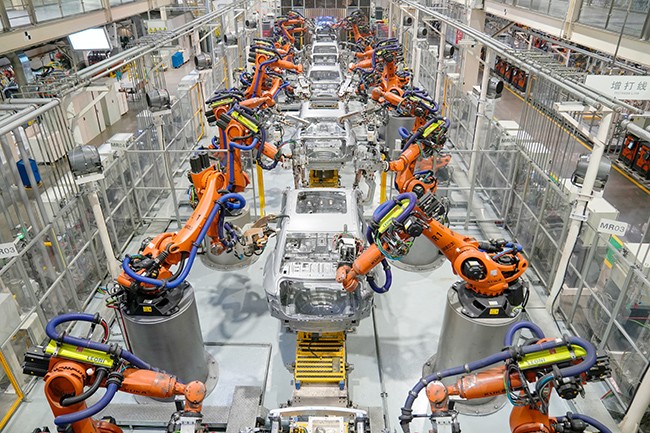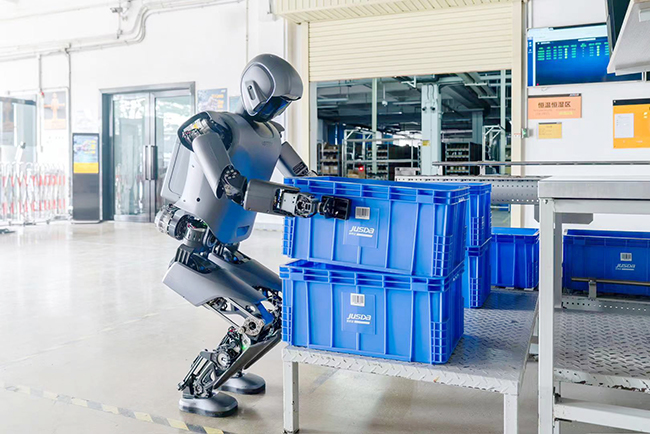当前位置 : 洛杉矶时报增刊
 发布日期:2025/3/26
发布日期:2025/3/26
 来源:International daily
来源:International daily
 打印
打印



Guangdong, a province in the southern tip of the Chinese mainland, is a key player in the country's economy.
Known as "China's California", Guangdong has topped the country in GDP for 36 years, with its economy reaching 14 trillion RMB (about 1.9 trillion USD) in 2024—making it the first province in China to hit this milestone. On the other hand, its GDP growth rate of 3.8% last year was below the national average.
China has set a 5% GDP growth target for 2025, and Guangdong is following suit. How will the province achieve this ambitious goal? At the Provincial High-quality Development Conference on February 5th, Guangdong highlighted artificial intelligence and robotics as key growth drivers. This strategy aligns with the country's 2025 Government Work Report, which emphasizes supporting the extensive application of large-scale AI models and vigorously developing intelligent robots.
AI on the rise in Guangdong
In late 2024, a Chinese company launched DeepSeek-V3, a large AI model outperforming GPT-4o. The release of DeepSeek sent shockwaves through the global AI community. This achievement is deeply tied to China's overall innovation ecosystem, with Guangdong playing an irreplaceable role.
Shenzhen, the Chinese counterpart of Silicon Valley, is a key player in the global innovation scene. Homing to industry giants such as Huawei, BYD (a leading electric vehicle manufacturer), and DJI (the world's top drone maker), the city also boasts the highest concentration of AI companies in China.
Shenzhen's success in AI is contributed to its strong industrial base, as noted by Dr. Li Enhan from the China Development Institute. A fully integrated supply chain ranging from hardware to algorithm and application boosts the city's AI industry, with companies covering everything from chip design (HiSilicon) to smart devices (DJI, UBTECH) and cloud computing (Tencent Cloud). Such an ecosystem allows Shenzhen to turn technology into real-world applications, making AI a central part of the real economy with huge commercial potential.
Guangdong leads in robotics
Guangdong is also a major player in the global robotics industry. Of the more than 813,000 robotics companies in China, over 155,000 are based in Guangdong—about 19% of the total.
Among the 37 Chinese firms listed among the world's top 100 humanoid robot manufacturers, seven companies come from Guangdong, including giants such as BYD, Tencent, and UBTECH, according to Morgan Stanley's report titled "The Humanoid 100: Mapping the Humanoid Robot Value Chain".
Guangdong's humanoid robots are already making an impact. UBTECH's WalkerS series robots have been deployed in the car factories of BYD, Xiaomi, and Geely, where they handle tasks such as quality inspection, sorting, and material handling. Additionally, Leju's humanoid robot "Kuafu" showcased its capabilities at international winter sports events, interacting with torchbearers in -20°C conditions at the 9th Asian Winter Games.
Like their US counterparts, Guangdong's robotics companies envision a future where robots are integrated into homes and workplaces, assisting with everyday tasks and enabling human-robot collaboration.
"China continues to show the most impressive progress in humanoid robotics where startups are benefitting from mature supply chains, local deployment opportunities, and strong national government support," says Morgan Stanley's report, which expressed confidence in the prospect of China's humanoid robotics.
Guangdong companies have established a stable and mature model in the industrial robotics sector. Midea Group, China's largest white appliance manufacturer, has expanded into robotics and automation, generating over 30 billion RMB in revenue, and thus become one of the world's top four industrial robot manufacturers. Midea + KUKA ROBOT Intelligent Manufacturing Technological Park, located in the Shunde District of Foshan, Guangdong, has become China's largest industrial robot production hub, delivering over 80,000 industrial robots.
Guangdong's industrial robot output surged by 31.2% in 2024, reaching over 240,000 sets, accounting for 44% of China's total, and maintaining the top position in China for five consecutive years.
Following the Provincial High-quality Development Conference, Guangdong quickly introduced new policies to support the robotics sector, including in its 2025 action plan for building a modern industrial system. The plan focuses on humanoid and intelligent robots, advancing key technologies including in robot "brains" and limbs, and encouraging innovative robot applications. Guangdong also plans to build a provincial innovation center for intelligent robots as well as nurture and introduce three to five leading tech companies in the field.
Reporters: Fu Yi, Zhao Peng









